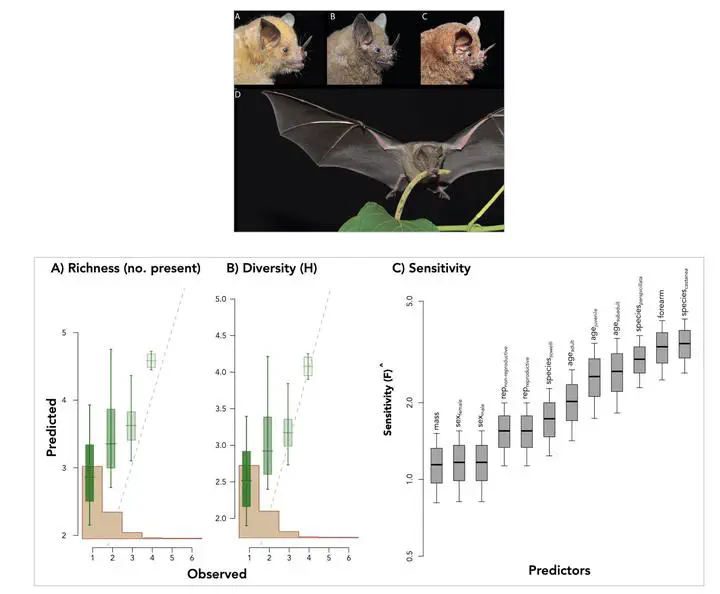Testing for reciprocal trait influence in plant-frugivore interactions using generalized joint attribute modeling
 Image credit: Laurel R. Yohe
Image credit: Laurel R. Yohe
Abstract
Under an adaptive hypothesis, the reciprocal influence between mutualistic plants and frugivores is expected to result in dispersal syndromes comprising both frugivore and plant traits that structure fruit consumption. Tests of this adaptive hypothesis, however, focus on traits of either fruits or frugivores but not both and often ignore within-species variation. To overcome these limitations, we analyze traits for the mutualistic ecological network comprising Carollia bats that feed on and disperse Piper seeds. For these analyses, we use generalized joint attribute modeling (GJAM), a Bayesian modeling approach that simultaneously accounts for multiple sources of variance across trait types. In support of the adaptive hypothesis and indicating niche partitioning among Carollia bats, we find differential consumption of a suite of Piper species influenced by bat traits such as body size; however, Piper morphological traits had no effect on bat consumption. Slow evolutionary rates, dispersal by other vertebrates, and unexamined fruit traits, such as Piper chemical bouquets, may explain the lack of association between bat Piper consumption and fruit morphological traits. We have identified a potential asymmetric influence of frugivore traits on plant-frugivore interactions, providing a template for future trait analyses of plant-animal networks.